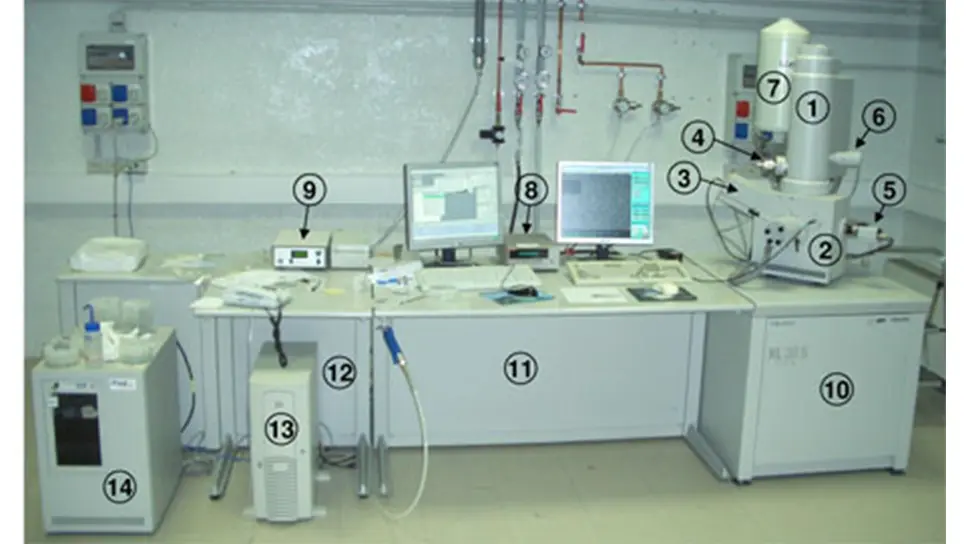EBL
EBL

The ever-growing demand for increasing the integration scale of digital electronics has prompted a search for novel devices and fabrication techniques at the nanometer scale. State of the art 45 nm optical lithography (Intel, 2008) is able to deliver transistors with the gate length as small as 35 nm. Electron beam lithography (EBL) is an indispensable technique for making the nanoelectronic devices on an even smaller scale.
In this technique, a highly focused electron beam is scanned over a surface covered by a resist sensitive to electron radiation (e.g., polymethyl-methacrylate - PMMA). Exposed areas become more (positive resist) or less (negative resist) soluble in organic solvents (e.g., methyl isobutyl ketone – MIBK), which are used to develop the exposed pattern. The pattern is transferred to the substrate by etching (e.g., reactive ion etching) or lift-off (e.g., metallization).
While the resolution of optical lithography is mostly limited by the wavelength of the excimer laser, diffraction is not the limiting factor in EBL due to a very small electron wavelength (less than 0.01 nm at 20 keV). The resolution of EBL is mostly limited by imperfections in the electron optics (aberrations limit the minimum electron beam spot size to ~ 2 nm) and electron backscattering from the substrate. These effects limit the smallest feature size to ~ 10 nm.
EBL is not suitable for a large scale production because electron beam exposure is a serial process (i.e., it is much slower than optical lithography). On the other hand, EBL is a fabrication tool of choice in nanoelectronics and low-dimensional physics. It allows researchers to fabricate and investigate very small devices which might be used in the future. EBL is used industrially in mask making for optical and x-ray lithography.
The work on EBL in Como started in May 2005 with the installation of the scanning electron microscope (SEM). The group is equipped with a Philips XL30 SFEG SEM with a Raith Elphy Quantum lithography attachment and a Scanservice beam blanker. This system (shown in Fig. 1) is used to pattern graphene and semiconductor heterostructures.
Fig. 1. Our EBL system. Parts: 1. Column 2. Specimen chamber 3. Secondary electron detector 4. Scanservice final aperture with integrated beam blanker 5. CCD camera 6. High tension valve 7. Liquid N2 tank (for X-ray detector) 8. Keithley pico-ammeter (to measure beam current) 9. Beam blanker power supply 10. Vacuum pumps and high tension circuitry 11. Electronics (printed circuits boards) 12. Power supply 13. Lithography PC (Raith Elphy Quantum) 14. SEM PC with integrated X-ray analyzer.